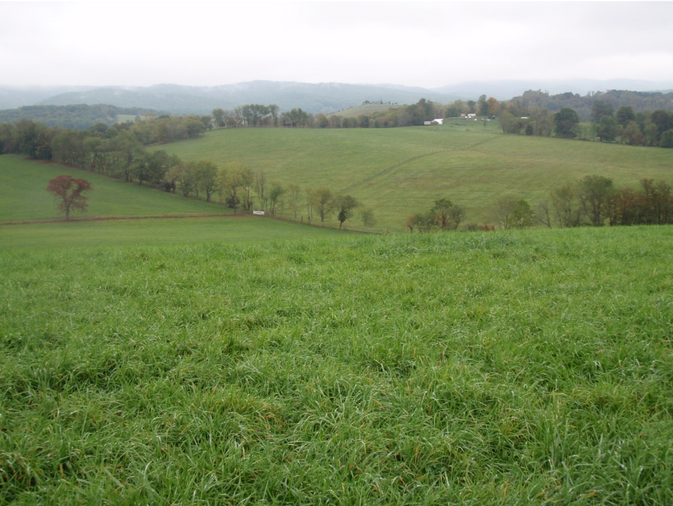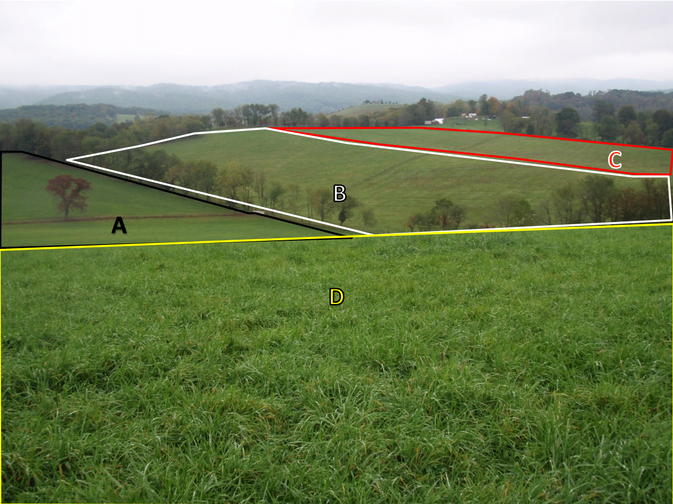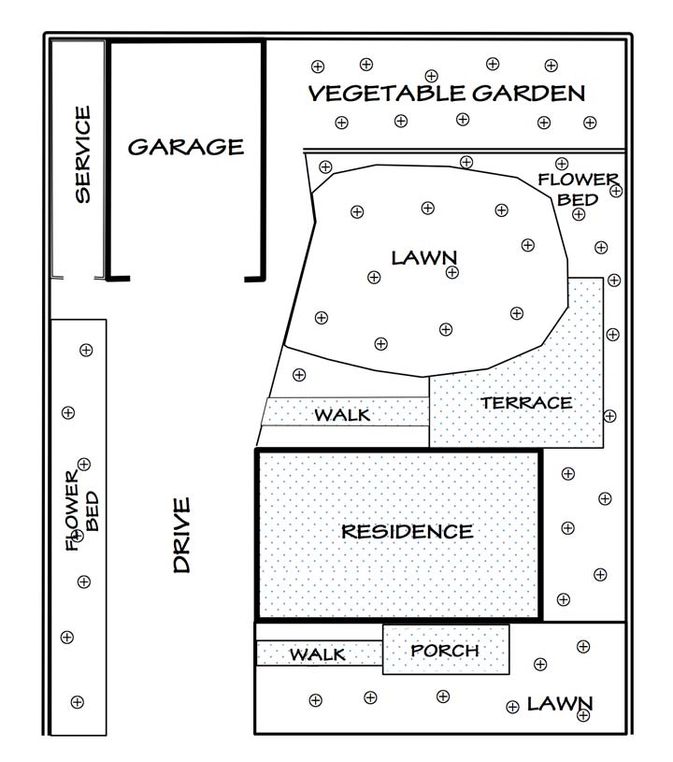Where to Soil Sample
Soils are as variable as people!
- The WVU Soil Testing Laboratory will provide to our customers scientifically based fertility and liming recommendations for your individual situation.
- When you apply the recommendations we provided, the outcome will be as good as the sample you sent to us.
- That is why we recommend that you submit to us a “representative sample” for your analysis.
- What is a representative sample?
- Is a sample that represents the average in your sampled area the best.

How do I sample my area or field?
- It will depend on the characteristics of your area or field and management.
- Samples should represent different characteristics and management zones in the field.
- You could take different samples in areas with different slopes A-B-C and D (see image below), or different managements (hay vs. pasture fields).

- Where To Sample: Random sampling to obtaining a representative composite sample.
This image shows dots along zigzag lines in Fields B & C where random soil samples might be taken.
- A diagram showing more examples of random soil sampling.
This diagram shows a field divided into 4 quadrants and various locations where soil samples might be taken in the various quadrants.
- In Field 1 at the bottom left of the diagram, Sample 1 could be taken at the foot of the slope. Sample 2 is located at the top left of the quadrant where the field had been limed while Sample 3 is in the top right non-limed portion of the field.
- In Field 2 is in the top left portion of the image. Sample 4 is taken at the highest point of this field in the top left corner, while Sample 5 is made at the bottom of the quadrant.
- Field 3 in the top right corner, shows two different versions of random patterns of 14 samplings. These 14 samplings will be combined to form one composite sampling for Sample 6.
- In Field 4 in the bottom right section, the pasture is divided into top and bottom for sampling purposes, with Sample 7 coming from the higher slope and Sample 8 from the bottom land.
Homesite sampling
- Take random samples from each main area to obtain one composite sample per main area.
- Example of main areas are:
- vegetable garden
- lawn
- flower beds

Tools to sample
- The best tools for taking a soil sample are the soil core sampling tube or auger. These tools are pushed (tube) or twisted (auger) into the soil to the proper depth to extract a small core of soil. A number of these cores are combined to provide a “composite” soil sample. Taken from: Soil Sampling and Testing by Ed Rayburn and Tom Basden, WVU Extension Specialists (June 2014).
- Soil core sampler or probe (P), clean bucket (B), plastic glass (G) for grinding the soil, slotted spoon (S) for removing small rocks and coarse organic matter from the soil.
Taking a soil sample
- http://www.opb.org/news/article/northwestofficials-arent-sampling-yards-suspected-of-lead-and-arsenic-contamination-so-we-did/
- http://theadvocate.com/features/people/14965591-148/its--me-to-test-your-soil
Soil representative sample
- You will prepare a “composite sample”, and take part of it to send to our laboratory.
- The “composite sample” is prepared by mixing soil taken at several different locations in your sampled area. You will mix the soil in a clean container.
Important considerations
- An individual composite sample (15-30 locations) should represent no more than 10 acres except when soils, past management, and cropping history are quite uniform.
- The most representative sample can be obtained from a large field by sampling smaller areas on the basis of soil type, cropping history, erosion, or past management practices as shown in our previous figures. Some managements practices such as manure application applied to certain parts of the fields, will increase the soil P content in the applied spots.
- Soil sampling can also be used separate areas of the field that are visually different or have consistently problems (for example low yielding areas).
- To prepare a composite sample, randomly collect at least 7-10 soil cores for small areas (less than 1 ac) and up to 15-30 cores for larger fields (1-10 ac).
- We do not recommend that you samples:
- old fencerows
- areas used for manure or hay storage and livestock feeding
- areas where lime or fertilizer has been piled
Sampling depth and sampling frequency
- How deep should I take my samples
- Home Gardens -- To tillage depth
- Agricultural Crops -Conventional Tillage-- To tillage depth
- Agricultural Crops-- No-till-- 6 inches split into two samples a) top 2 inches and b) lower 4 inches
- Pastures -- 2-4 inches
- Meadows --4-6 inches
- Lawns -- Existing: 4 inches; New: 6 inches